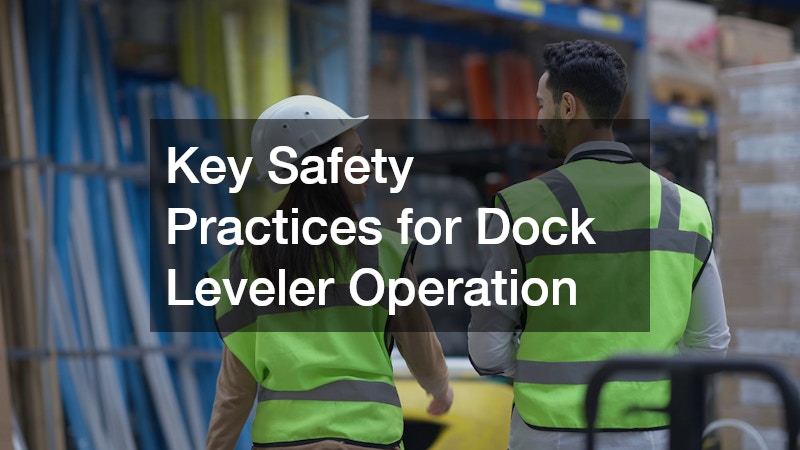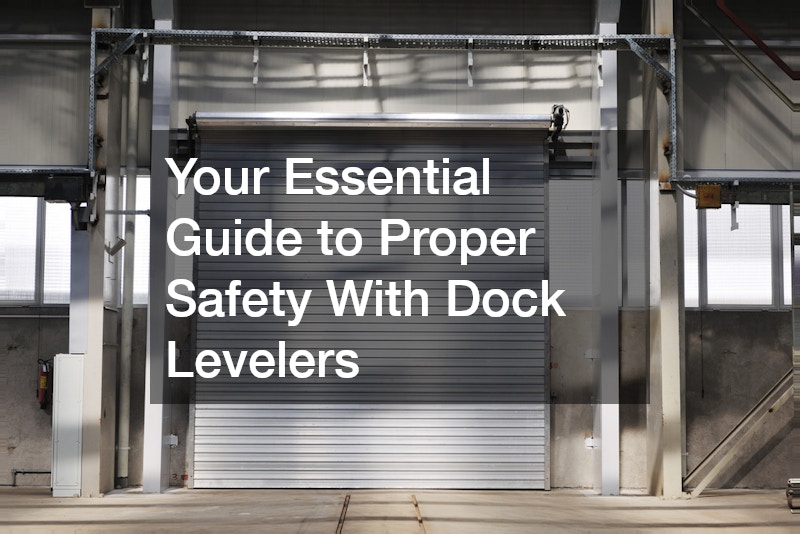
In the fast-paced world of logistics and material handling, dock levelers play a crucial role in ensuring efficiency and safety. These mechanical devices bridge the gap between a loading dock and the transport vehicle, allowing for smooth transfer of goods. Without dock levelers, the difference in height and space could lead to significant hazards such as slips, trips, and falls, which are common causes of workplace injuries.
This is why understanding and prioritizing the safety features of dock levelers is essential for any business involved in loading and unloading goods. With the right dock levelers in place, not only is safety enhanced, but productivity is also significantly improved.
The versatility of dock levelers makes them indispensable in a variety of settings, from factories to distribution centers. They are designed to withstand substantial weight and to adjust to different vehicle heights, accommodating different types of loads with incredible ease. However, despite their robust construction, mishandling or improper maintenance of dock levelers can lead to mechanical failures and accidents. Regular inspections and maintenance can greatly mitigate these risks, ensuring that the equipment functions optimally. By fostering a culture of safety and awareness, organizations can harness the full potential of dock levelers.
Comprehensive training for all personnel who operate or work near dock levelers is imperative. Training should include knowledge of how dock levelers work, the potential risks involved, and the best practices to mitigate these risks. Employees should be equipped to recognize signs of wear or malfunction that need immediate attention to prevent possible accidents. Furthermore, fostering open communication about safety improvements and incident reporting ensures an inclusive environment for continuous improvement. Investing in employee safety training and dock leveler upkeep has both immediate and long-term benefits, reducing downtime and enhancing workplace safety.
Key Safety Practices for Dock Leveler Operation

Safety begins with proper installation and regular maintenance of dock levelers. Use only certified professionals for the installation to ensure that the dock leveler is fitted correctly and meets all industry safety standards. Regular maintenance is non-negotiable as it helps detect issues early and prolongs the lifespan of the dock levelers. Establish a routine checklist for inspections, which includes checking for physical damage, functionality tests, and any other unusual signs. By taking these preventive steps, the chances of mechanical failures that could cause workplace injuries are significantly reduced.
In addition to maintenance, always ensure that the loading and unloading procedures are compliant with safety protocols. This includes securing the vehicle properly before the dock leveler is engaged to avoid movement that could disrupt the loading process. Additionally, personnel must never stand in the performance zone of the dock leveler, as sudden movements can lead to serious injuries. Vehicles should be equipped with safety lights and alarms to warn bystanders during operations. These safety practices, when consistently implemented, create a coordinated environment that ensures the security of both personnel and goods.
Another critical safety measure is the use of appropriate signage and barriers to control the dock area. Signs alerting employees and visitors about ongoing operations help to reduce accidental entries into dangerous zones. Barriers can deter unauthorized personnel from accessing the areas where dock levelers are in use. Furthermore, implementing a lockout/tagout policy ensures that dock levelers are entirely inoperable during maintenance or when not in use. By integrating these precautions, businesses can significantly lower the risk of accidents and enhance the safety of their loading dock operations.
The Role of Technology in Dock Leveler Safety
Advances in technology have greatly influenced the development of safer and more efficient dock levelers. Modern dock levelers come equipped with advanced safety features such as anti-slip surfaces, hydraulic systems for smooth operations, and automatic return functions. Additionally, some models now have integrated sensors that detect docking anomalies and alert personnel in real-time. By investing in technologically advanced dock levelers, businesses not only enhance safety but also improve operational efficiency. Leveraging these technological tools ensures that businesses can stay ahead in maintaining the highest safety standards.
Automation and digital monitoring systems have further enhanced the capabilities of dock levelers. Digital systems allow for continuous monitoring of dock leveler performance, providing alerts when maintenance is due or if unusual activity is detected. This level of monitoring ensures that any issues can be addressed promptly, thus preventing potential accidents. The integration of automated systems into dock levelers contributes to reducing human error, which is one of the leading causes of accidents. Harnessing these technological advances is essential for businesses aiming to minimize risks and improve operational efficiency.
Furthermore, adopting technology in dock leveler processes can facilitate better training and compliance tracking. Virtual simulations of operational scenarios can be used for training personnel, enabling them to understand the correct procedures and identify potential hazards in a controlled environment. Compliance with established safety protocols can also be digitally monitored, ensuring that records are maintained accurately and are easily accessible for audits. This holistic application of technology not only enhances the safety measures around dock leveler usage but also promotes a proactive approach to safety management.
Understanding the essential role of dock levelers and implementing rigorous safety practices are critical to preventing workplace injuries and improving operational efficiency. By combining regular maintenance, efficient operating procedures, and technological advancements, organizations can create a safer and more productive work environment.



